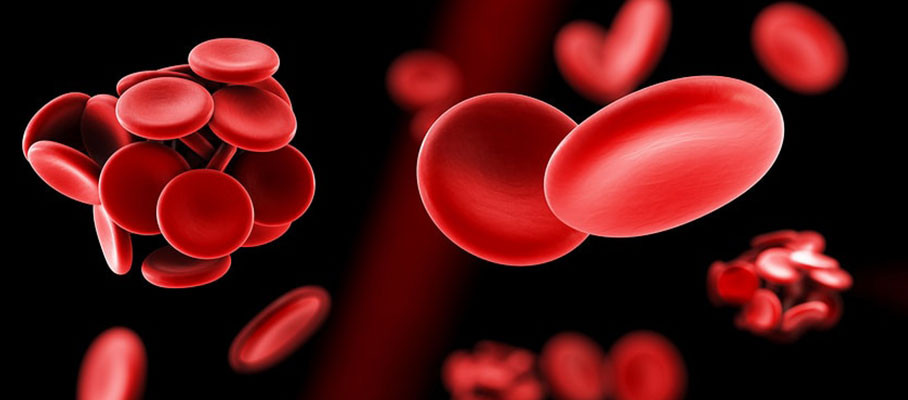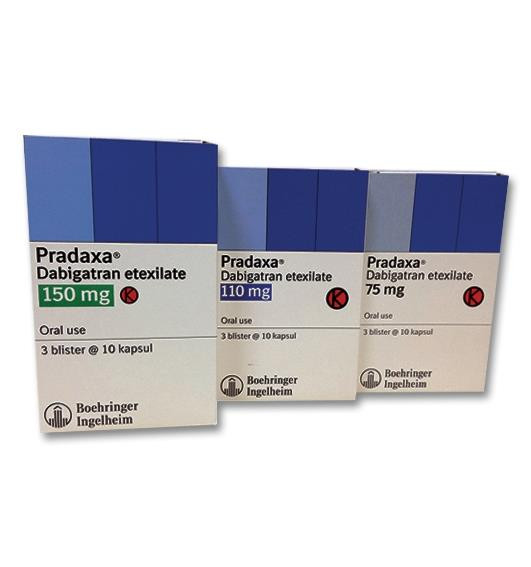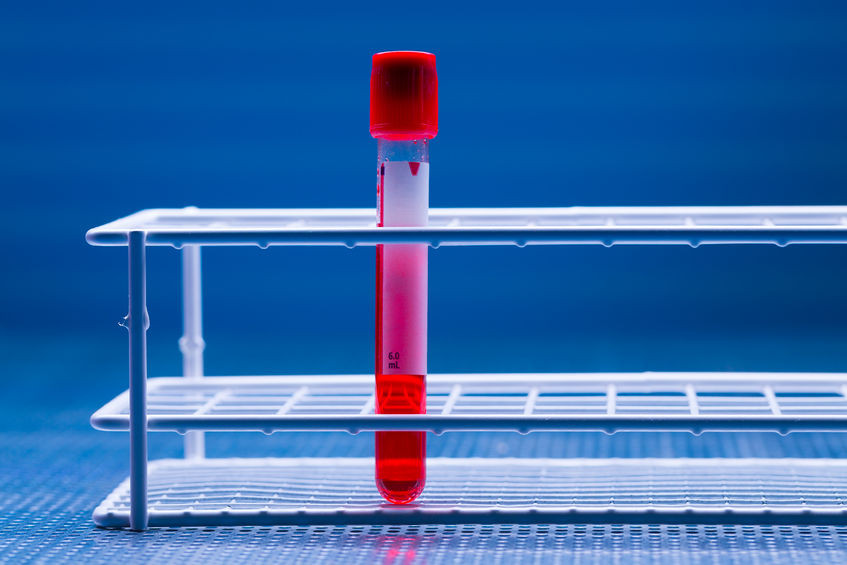Definition
Thrombophilia is a blood disorder that makes blood in veins and arteries more prone to clotting or forming clots. It is also known as a hypercoagulable condition, as your blood will tend to clot or coagulate more than normal condition.
Normally, your body forms blood clots when you get injured, such as getting a thorn or knife cut. When the body detects bleeding, blood clots form to stop the bleeding. After the bleeding stops, your body breaks down the blood clot when it is no longer needed.
In individuals with thrombophilia, the body may form too many blood clots or may not break down formed clots that are no longer needed.
Blood clots can cause blockages in veins or arteries. This condition is dangerous and can lead to serious organ damage. Blood clots also increase risk of getting stroke or heart attack, as blood vessels can be blocked by these clots. If there is a blockage in your blood vessels, blood cannot deliver oxygen to your cells.
Causes
There are 2 types of thrombophilia:
Hereditary Thrombophilia
Hereditary thrombophilia is a type of condition present since birth and passed down from parents to children. An individual can inherit a mutated copy of a gene from the mother, father, or both. This can lead to either an excessive or insufficient production of blood clotting proteins needed by the body to regulate blood clot formation.
Several types of hereditary thrombophilia include:
- Factor V Leiden Thrombophilia: the most common hereditary thrombophilia, found in 5-8 percent of individuals of European descent
- Prothrombin Thrombophilia: the second most common hereditary thrombophilia, increasing the risk of disorders such as blood clotting in the lungs or miscarriages
- Thrombophilia due to Deficiency of Protein C or Protein S: type of thrombophilia where there is a deficiency of either protein C or protein S in the blood. Both proteins work together to prevent excessive blood clotting
- Thrombophilia due to Deficiency of Antithrombin III: type of thrombophilia caused by a deficiency of Antithrombin III protein in the blood. This protein plays a role in preventing the formation of abnormal blood clots
Acquired Thrombophilia
This condition is more commonly found than congenital thrombophilia. There are many factors that can cause someone to experience thrombophilia, including:
- Antiphospholipid Antibody syndrome: occurs when the immune system produces antibodies that make the blood more prone to clotting
- Diseases affecting the blood clotting process: conditions such as hepatitis (liver inflammation), HIV infection, or liver organ disorders can influence the blood clotting process
- Certain medication: several drugs can also contribute to thrombophilia.
Risk Factor
Factors that can increase the risk of thrombophilia include:
- Excess body weight
- Pregnancy
- Smoking or using any tobacco products
- Diseases such as cancer, diabetes, HIV-AIDS, or certain heart disorders
- Lack of physical activity or prolonged period of inactivity such as bedrest
- Undergoing surgery or hospital treatment
- Taking contraceptive pills or hormone replacement therapy containing oestrogen
- Family members with blood clotting disorders
- Middle aged and elderly
Symptoms
Most individuals with thrombophilia do not experience symptoms and may never have any health issues. They often discover they have thrombophilia when they encounter a medical condition related to blood clots. Symptoms arising from these blood clots can vary depending on the affected part of the body.
One manifestation of thrombophilia is deep vein thrombosis (DVT), a blood clotting condition in the large veins of the leg. This condition, known as deep vein thrombosis, may cause symptoms such as:
- Throbbing pain or cramps in one leg, typically in the calf or thigh
- Swelling in one leg
- Warmer skin in the affected area compared to other parts of the body
- Changes in skin color, becoming reddish or darker
- Swollen veins may feel firm or painful to the touch
If a blood clot detaches and circulates in the bloodstream, it can lead to a dangerous condition. These blood clots can become trapped in various areas of the body, causing a variety of symptoms such as:
- Blood clot in the brain: sudden vision or speech disturbances, seizures, weakness on one side of the body, decreased consciousness
- Blood clot in the heart: shortness of breath, left-sided chest pain radiating to the left arm, feeling faint
- Blood clot in the lungs: shortness of breath or rapid breathing, rapid heart rate, pain while breathing deeply, floating sensation, loss of consciousness
- Blood clot in the abdomen: nausea, vomiting, severe abdominal pain
Diagnosis
Generally, medical conditions related to blood clotting are diagnosed through a medical interview, physical examination, and diagnostic tests. The doctor will inquire about:
- Symptoms
- Medical history
- Family history or blood-clot abnormalities related conditions
- History of pregnancies and deliveries (for females)
- Current medications and undergoing treatments
A physical examination is then conducted based on the reported symptoms. In diagnostic tests, the doctor may recommend blood tests and examinations related to blood clotting. If the blood test results indicate thrombophilia, you may be referred to a specialist in blood disorders (haematologist) for further evaluation and management.
Management
Treatment is typically initiated if a person with thrombophilia has experienced blood clotting or if there is a high risk of blood clotting. The common approach to treating blood clots involves the use of anticoagulant medications or blood thinners to prevent the formation of blood clots. If you are at a high risk of blood clotting, you may need to take these medications regularly. Your doctor will provide education on the signs of blood clot-related complications that need monitoring and immediate attention.
There is an increased risk of blood clotting during pregnancy with certain types of thrombophilia. If you have thrombophilia and are pregnant or planning to become pregnant, discuss this with your doctor. Inform your obstetrician or midwife about your condition. You may need to take medications during pregnancy to prevent complications. If you are undergoing major surgery, ensure that the doctor managing your case is aware of your condition.
Women with thrombophilia should avoid taking combined oral contraceptives or hormone replacement therapy, as these can increase the risk of blood clot formation.
Complication
Blood clots can circulate throughout the body, causing serious problems such as:
- Pulmonary embolism
- Heart attack
- Stroke
- Kidney failure
- Miscarriage
Thrombophilia can also increase the risk of blood clot formation in the arteries, leading to blockages (peripheral artery disease).
Prevention
The most possible prevention of blood clotting abnormalities is by staying active. If you are traveling or in the recovery phase after illness or surgery, it's important to stand up and walk briefly every few hours. Ensuring proper hydration is also crucial.
Other ways to prevent thrombophilia include:
- Avoid smoking
- Maintaining an ideal body weight
- Engaging in regular exercises
- Seeking treatment for medical conditions that might cause thrombophilia
If you are taking blood thinners or anticoagulation medications, it's crucial to take the medication as prescribed and monitor for signs of bleeding, such as nosebleeds, blood in urine, or stool. Consult with a doctor promptly if you encounter any issues with the use of blood thinners.
When to See a Doctor?
If you are experiencing thrombophilia, it's important to pay attention to symptoms of blood clotting and promptly consult a doctor if you suspect you are experiencing them. You can immediately visit the Emergency Department to receive prompt medical treatment.
Looking for more information about other diseases? Click here!
- dr Hanifa Rahma
Thrombophilia (2022) nidirect. Available at: https://www.nidirect.gov.uk/conditions/thrombophilia (Accessed: March 15, 2023).
Thrombophilia (2020) NHS choices. NHS. Available at: https://www.nhs.uk/conditions/thrombophilia/ (Accessed: March 15, 2023).
Thrombophilia: Causes, symptoms and treatment (2021) Cleveland Clinic. Available at: https://my.clevelandclinic.org/health/diseases/21797-thrombophilia (Accessed: March 15, 2023).












